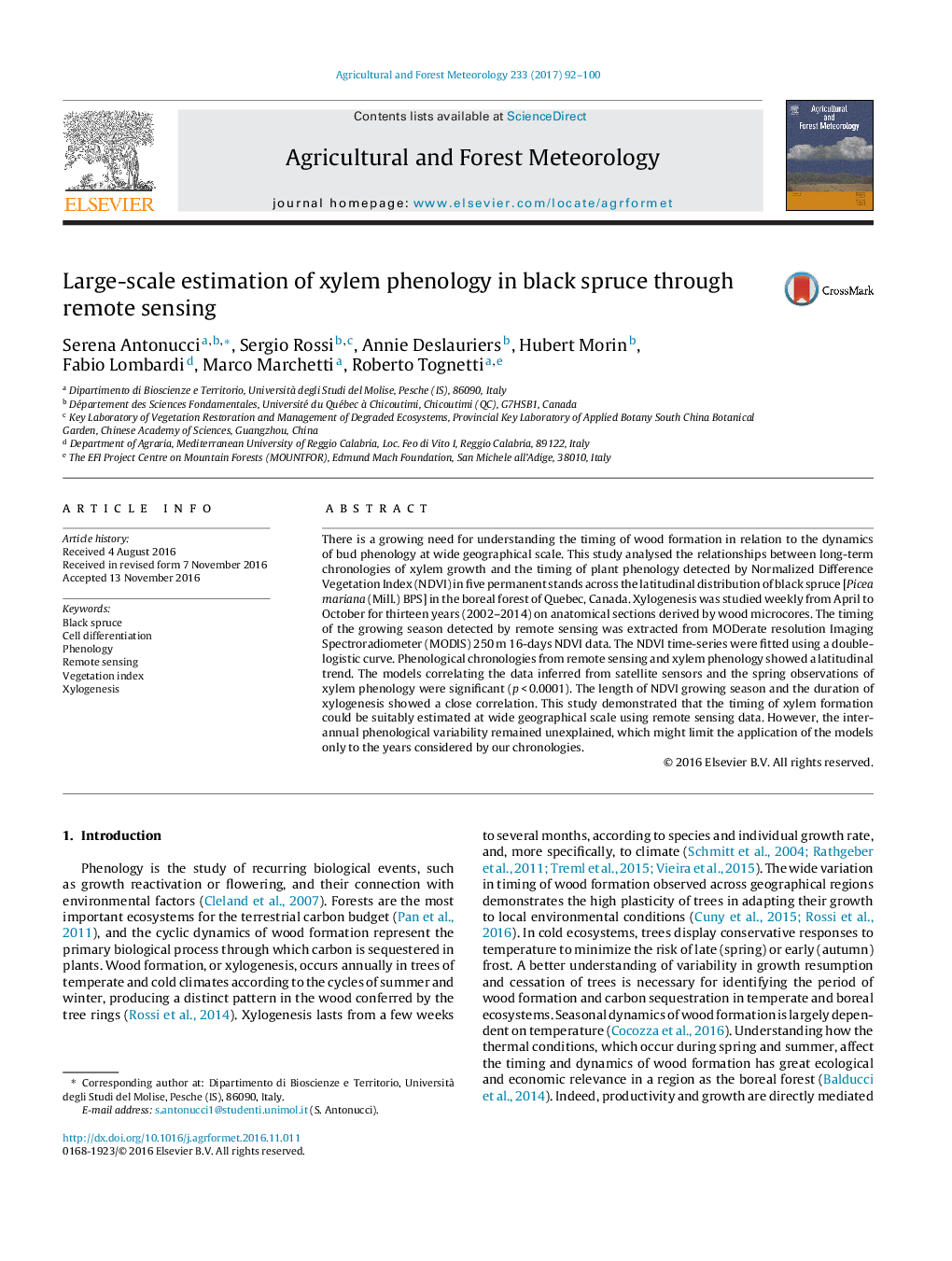| Article ID | Journal | Published Year | Pages | File Type |
|---|---|---|---|---|
| 4758954 | Agricultural and Forest Meteorology | 2017 | 9 Pages |
Abstract
There is a growing need for understanding the timing of wood formation in relation to the dynamics of bud phenology at wide geographical scale. This study analysed the relationships between long-term chronologies of xylem growth and the timing of plant phenology detected by Normalized Difference Vegetation Index (NDVI) in five permanent stands across the latitudinal distribution of black spruce [Picea mariana (Mill.) BPS] in the boreal forest of Quebec, Canada. Xylogenesis was studied weekly from April to October for thirteen years (2002-2014) on anatomical sections derived by wood microcores. The timing of the growing season detected by remote sensing was extracted from MODerate resolution Imaging Spectroradiometer (MODIS) 250 m 16-days NDVI data. The NDVI time-series were fitted using a double-logistic curve. Phenological chronologies from remote sensing and xylem phenology showed a latitudinal trend. The models correlating the data inferred from satellite sensors and the spring observations of xylem phenology were significant (p < 0.0001). The length of NDVI growing season and the duration of xylogenesis showed a close correlation. This study demonstrated that the timing of xylem formation could be suitably estimated at wide geographical scale using remote sensing data. However, the inter-annual phenological variability remained unexplained, which might limit the application of the models only to the years considered by our chronologies.
Related Topics
Physical Sciences and Engineering
Earth and Planetary Sciences
Atmospheric Science
Authors
Serena Antonucci, Sergio Rossi, Annie Deslauriers, Hubert Morin, Fabio Lombardi, Marco Marchetti, Roberto Tognetti,
